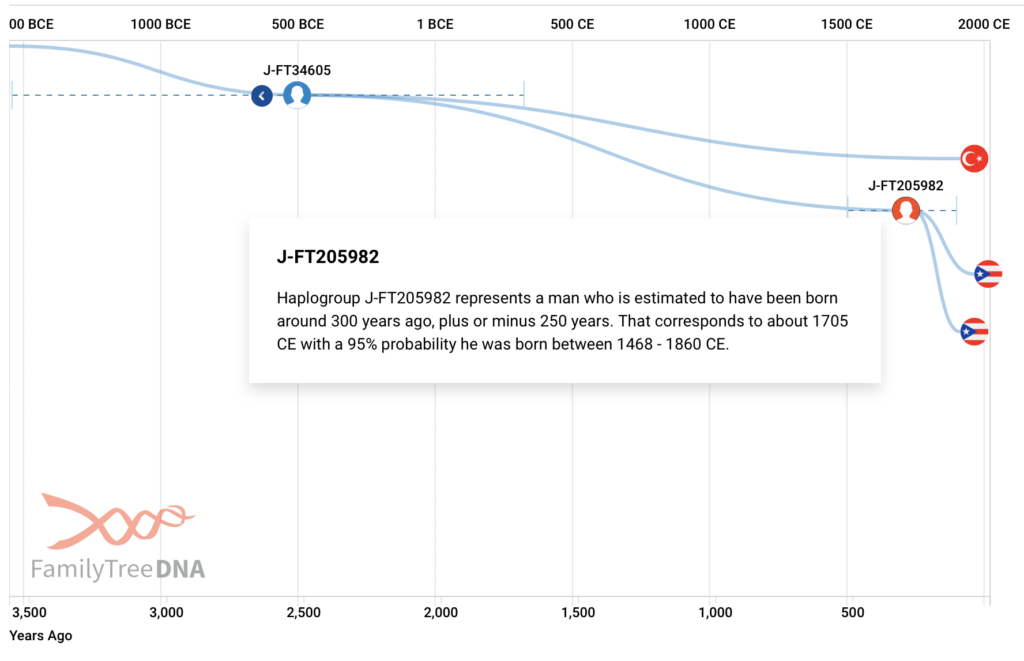Recently, on FTDNA there was an update to the way you can see your Y-DNA line, making the information a bit more understandable and digestible. This post will focus on my Correa line which I tested via my maternal grandfather (which has been very peculiar in regards to how uncommon the line is) and analyzing a bit the information provided on the haplogroup by FTDNA.
Genealogical Background
My Correa line on paper can be traced back seven generations to my 5th great-grandfather José León Correa Carcaño. Currently, I have his marriage records (he married twice, first in 1809 and then again in 1819 – both times in Coamo) and his death record. José passed away the 21st December 1856 also in Coamo, Puerto Rico at the age of about 64 – making his birth year around 1792. His parents are mentioned as Juan Francisco Correa and Eugenia Carcaño.
It is important to mention a surname discrepancy here since we are talking about Y-DNA testing. Though in the later half of his life José de León used “Correa”, he actually married the first time and baptized his first four children only as “Jose León” or “José de León”.
This is important to mention because if “José de León” was his first name than Correa was picked up later, specifically around 1814 when he baptized his son Antonio Abad Correa. If “de León” was his surname then it means instead that he changed it to “Correa” around this time. It is hard to say but I think it might be the latter since he keeps “José de León/José León” throughout his entire life instead of removing “León” and using “Correa”. José León seems to be a common combination as a name as well.
Finally, it’s also important to note that José León Correa’s race appears as pardo throughout his life in documents.
1st Marriage - 1809
José de León & Rosa Ortiz
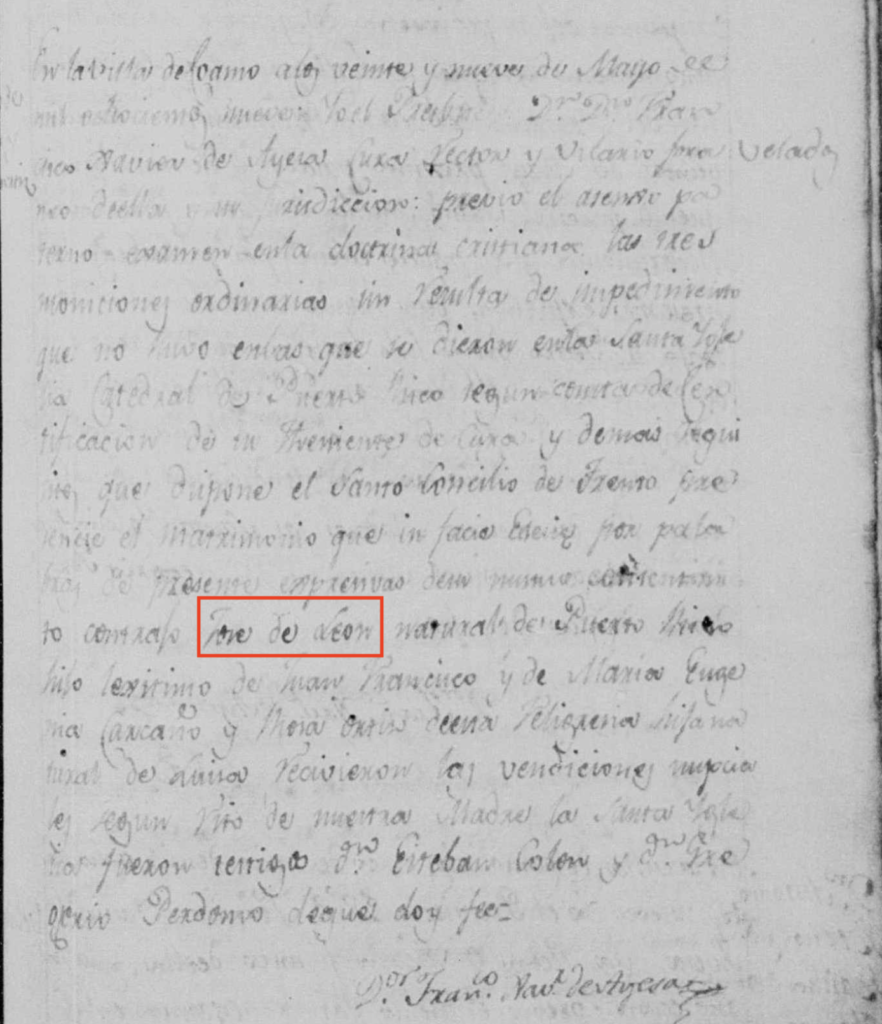
Baptism - 1814
(Antonio Abad Correa)

2nd Marriage - 1819
José de León Correa &
María de la Cruz Rodríguez


Currently, this is as far back I have been able to trace the Correa family. Though I have José’s parents’ names, I can not find them in San Juan where they apparently came from. I have also looked in nearby towns such as Río Piedras and Loíza. There are also no other Correa it seem in Coamo that match this family and Carcaño is not a very common name.
Genetic Background
In the past, I posted about the Y-DNA 111 analysis for the Correa line. Since then, I have upgraded the line to Y-DNA 700 (Big Y) which is currently the highest testing one can do with the paternal line. Many of the features such as matches, haplogroup/SNPs, and the migration map continue to be the same. As you can see under “Big Y” below, there is a block tree feature which is fairly cool which shows your relation with other Big Y testers. I still only match one other Puerto Rican who does not share the same surname as my grandfather but the match is fairly close and definitely worth investigating.
The feature I do want to focus on is “DiscoverTM Haplogroup Reports” which includes various new ways of seeing and understanding your line.
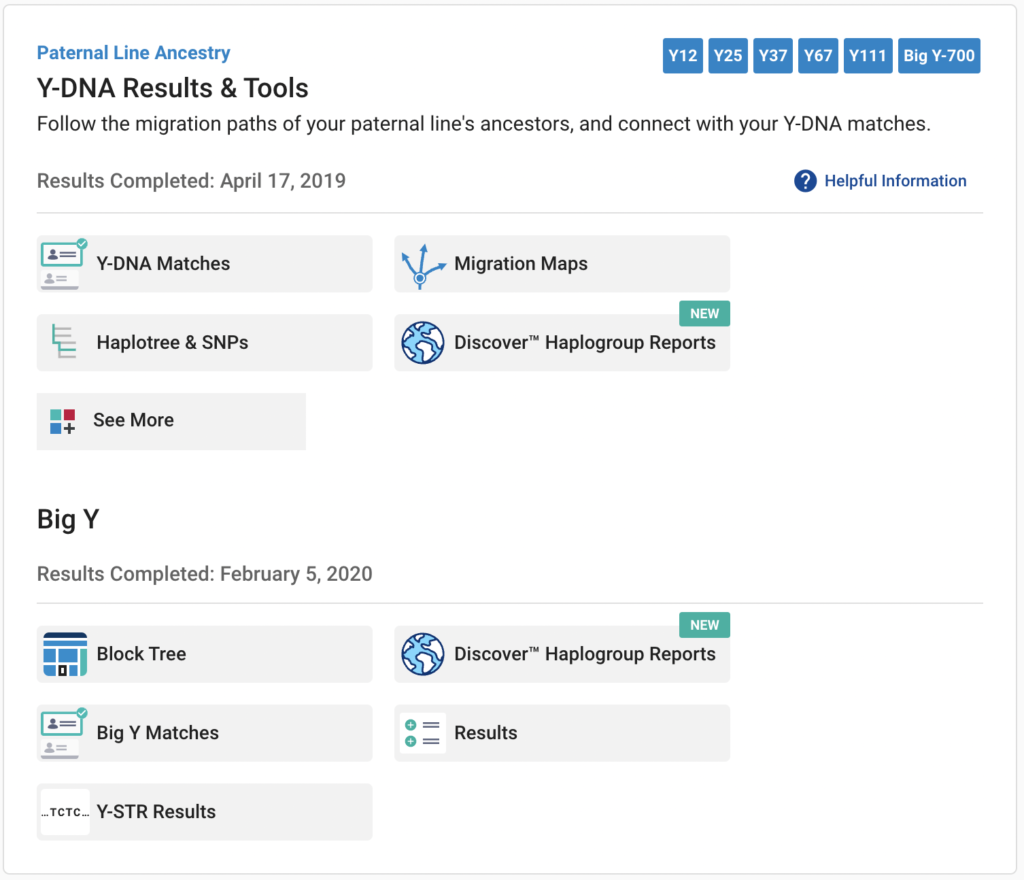
So let's take a look at the line and see what we can learn!
Haplogroup Story/Timeline
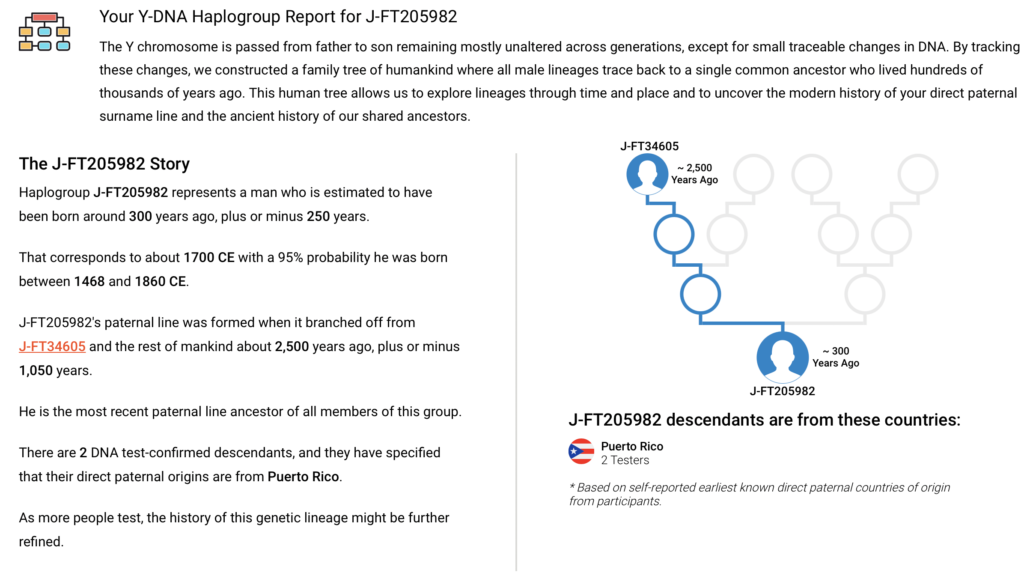
Above you can see that my specific group J-FT205982 sprang about only about 300 years ago! Which honestly in terms of Y-DNA testing and age is a very young line. So young that FTDNA actually had to create a new line for my grandfather since he didn’t fit correctly into others. You can see that there is another tester from Puerto Rico who also falls under this specific haplogroup lineage.
It says that there is a 95% chance of my ancestor being born between 1468 and 1860CE (common era). I have my line traced to the early 1700s and at that time still being born in Puerto Rico, so I would imagine that my ancestor that immigrated with this line was probably born much earlier in the 17th or even 16th century. What’s interesting is that this line was possibly “born” as early as the time of exploration of the New World.
The older origin of the line stems from J-FT34605 which is way, way older – from 2,500 years ago!

Here you can see a visual representation of my specific haplogroup found in the common era and the parent haplogroup much farther back in history.
In another feature called “Country Frequency” you can see Puerto Rico in red and the only country that is lit up on the map because it is the only country we find currently testers with the same haplogroup.
Notable Connections
What’s interesting about my line is that is has an ancient connection with some lines currently detected in members who practice Judaism and the Cohanim lineage. Granted, my line is much younger and you can see it is also connected to the Hashemite Jordanian Royal Family (a long time ago) and so there is no direct way of knowing the cultural/ethnic origin of my ancestor. But likely he originated from somewhere in that area of the world and/or potentially tied to the Sephardic Jews or even the Moors in Spain.
Though this is an interesting feature, it is definitely one you take with a grain of salt. The Jewish Cohanim lineage goes back to 1150-300 BCE, and my ancestor parent group 2,750 years ago – time periods from which I do not have genealogical paperwork for, let alone from the early 1700s!


Time Tree
Similarly, this feature let’s you see your lineage and in relation with other testers and lines. For example, you can see the two Puerto Rican testers that descend from J-FT205982 (one of them being my grandfather) and then you can see another line (much older) who has two testers (one from Turkey and another from Kazakhstan). At the bottom of the chart you can see that my line falls under “modern” while the older line is towards the beginning of “imperial”.
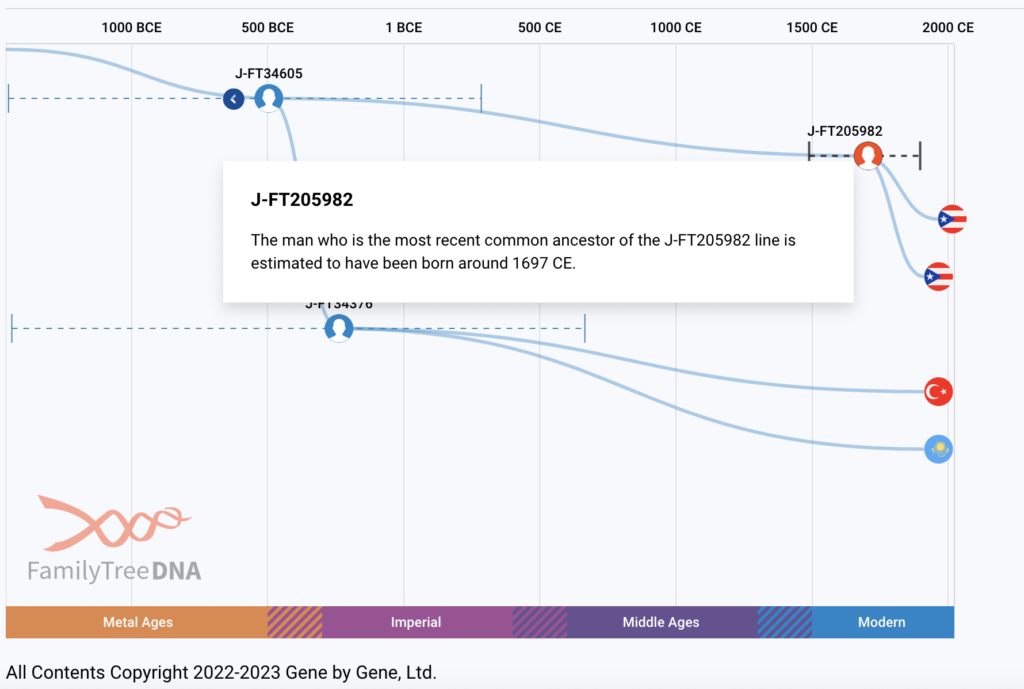
Scientific Details
The last section I want to highlight includes more in-depth information about the time period of my specific haplogroup variant. As you can see below the chart on the left offers confidence levels about when likely in the common era my ancestor would have been born. At 99% we have 1313-1917 and at 95% we have 1468-1860. On the right you can see that the mean year is 1705 CE, showing the likelihood of such possibilities.
As I mentioned before, José León Correa Carcaño would have been born around the 1790s according to his death record and so likely it is someone fairly close to José León, whether a father or grandfather that this line likely branched off to create our specific haplogroup variant. Since there are not many of us tested in this group, I imagine we would need more testers to find out more information about this specific haplogroup and its origins.
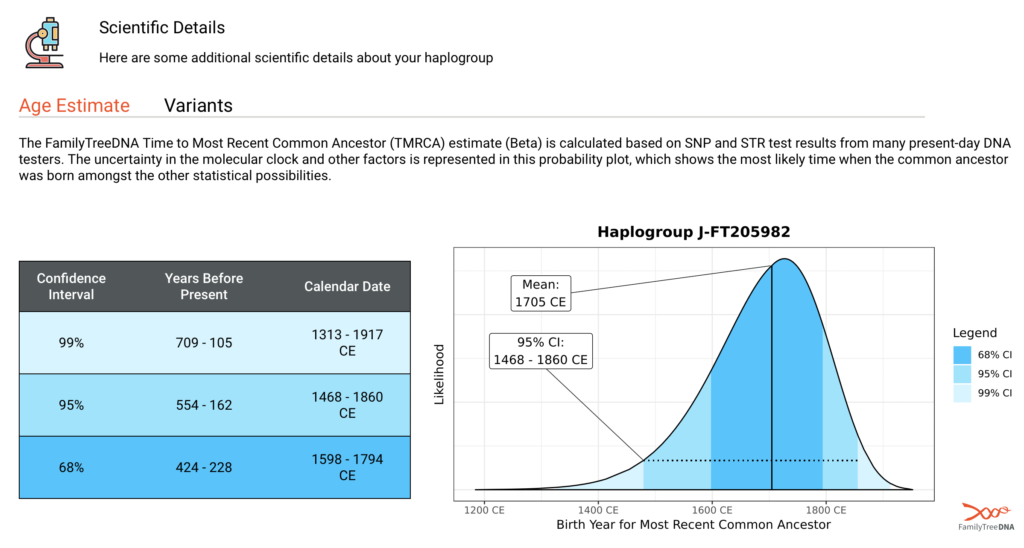
It is super interesting to see how far genetic genealogy can take us. Being stuck seven generations back now does not seem like such a daunting task because we can use DNA to hopefully bring us slowly closer to an ancestor and hopefully provide clues of where to search. Particularly in my case, I am fairly lucky that my grandfather’s haplogroup can be traced back to the common era and to a time where genealogical records can take us. Of course, the line stems back further in time but with a break around the 18th-17th century, we should be able to put a specific name and story to the ancestor that gave us J-FT205982.
Hopefully I can involve some more Correa men to test and see what else we can find out about this haplogroup and variant! It is one of my genealogical goals after all 😉
Cover Photo Source: “Time Tree”, FamilyTreeDNA (https://www.familytreedna.com/ : accessed 24 February 2023). Username and password of Carlos Correa privately held by Luis Rivera.

